Author(s): Amey Phatale and Arpita Kaushik*
Generative Artificial Intelligence (GenAI) is revolutionizing the automotive industry by introducing transformative applications in areas such as autonomous driving, vehicle maintenance, and in-car assistance. This paper explores the utilization of GenAI, with a particular focus on Large Language Models (LLMs) that enhance vehicle technology across various domains. By using GenAI, automotive manufacturers can improve design prototyping, predictive maintenance, and data management. The adoption of GenAI-driven technologies simplifies real-time data analysis, enabling faster decisionmaking, optimizing resource use, and improving vehicle safety. In autonomous driving, LLMs assist in generating safety requirements and navigating complex scenarios, further streamlining the development of self-driving systems. Additionally, GenAI enhances user experience through advanced in-car virtual assistants, offering more intuitive and interactive support for drivers. A custom GPT, fine-tuned to the Volvo S80 Owner’s Manual, is presented in this paper, showcasing its potential to simplify complex vehicle information for users. This paper also addresses the challenges associated with scaling GenAI in the automotive industry, including data pipeline management and real-time access to critical vehicle data. As the automotive sector continues to evolve, the adoption of GenAI technologies becomes crucial for sustaining innovation and preserving a competitive advantage.
Generative Artificial Intelligence (GenAI) is swiftly emerging as one of the most groundbreaking and transformative advancements within the AI domain. Unlike traditional AI, which focuses on identifying patterns and making predictions and decisions based on existing data, generative AI is capable of creating new content by learning patterns from a given dataset and then producing new data based on that understanding. This content can range from text, images, and audio to entire videos or complex simulations. The rise of OpenAI and its popular product, ChatGPT, has accelerated the adoption of generative AI across different sectors. ChatGPT, which can generate human-like responses to text prompts, has showcased the potential of generative AI to change the way in which humans interact with technology.
The automotive industry plays a critical role in the US economy and it is rapidly advancing, particularly with the evolution of electric vehicles. However, there are several important areas with significant potential for improvement, including autonomous driving, fast charging for electric vehicles, customer service, supply chain and logistics, maintenance and repair, as well as prototype testing and validation. AI can play an important role in enhancing and automating many of these areas. This paper will discuss the importance of adopting generative AI in automotive vehicle technology and deep dive into creating a custom GPT with vehicle manuals. It will also explore various use cases of generative AI in the automotive industry.
Let’s start by defining the different terms used in this paper.
Generative Artificial Intelligence (Gen AI): Generative AI is a part of Artificial Intelligence that creates new content. The content can be text, images, videos, graphs, files and others. This technology is capable of generating new content based on the input provided by user.
Large Language Models (LLM): It is a machine language model which is trained on huge amounts of data and is capable of understanding, generating and responding to Natural Language. These models are built using machine learning algorithms, typically a neural network architecture called a transformer, that are trained on vast amounts of text data from the internet, books, articles, and other sources.
Prompts & Prompt Engineering: The term "prompt" generally means giving guidance or suggesting the next step in a process. In the realm of Large Language Models (LLMs), a prompt is the text input that guides the model to execute a specific task and produce a response. "Prompt Engineering" involves crafting this input carefully to ensure the model generates the most relevant and desirable output.
Vehicle Technology: Vehicle technology refers to the various systems, components, and innovations used in the design, manufacturing, and operation of vehicles, such as cars, trucks, motorcycles, and even autonomous vehicles. It covers a wide range of fields, including hardware, electrical, electronic, and software- based technologies that aim to enhance vehicle performance, safety, efficiency, and user experience.
The adoption of generative AI is crucial for the automotive industry, as it presents multiple advantages. By leveraging AI for rapid decision-making, predictive analytics, and real-time optimization, companies in sectors like automotive, healthcare, finance, and manufacturing can gain a significant competitive advantage. Embracing this technology helps prevent the risk of falling behind competitors who continue to rely on traditional approaches. Companies that do not leverage generative AI will fall behind competitors who use it to accelerate product design, prototyping, and innovation. AI-driven companies can explore more design possibilities and optimize for performance faster. As the industry embraces generative AI, it's crucial for the automotive sector to keep pace with this technological shift. By integrating generative AI capabilities in-house, automotive companies can better adapt to and leverage these advancements. Generative AI enables industries such as automotive, aerospace, and construction to create innovative designs that maximize performance and resource efficiency. Failing to adopt AI-driven approaches means relying on traditional, less advanced methods that restrict the potential for product innovation.
Secondly, in manufacturing, generative AI can create prototypes and improve performance under various conditions in real time, reducing development cycles and cutting R&D costs. Faster prototyping can also improve efficiency and require a smaller team. It can also help with better 3D visualization.
Another compelling reason to adopt AI is the need to manage the massive amounts of data generated. Modern vehicle technology relies heavily on software and smart devices, leading to increasing data volumes. To extract meaningful insights from these vast and complex datasets, businesses require AI-driven analysis. Without leveraging AI, organizations risk being overwhelmed by their data, missing out on critical insights that can enhance growth and operational efficiency.
The automotive industry is witnessing numerous advancements driven by innovation. This section will explore two of these breakthroughs and examine their impact on the sector.
The paper "Engineering Safety Requirements for Autonomous Driving with Large Language Models", examines using Large Language Models (LLMs) to automate safety requirement engineering for autonomous vehicles [1]. Specifically, it presents a prototype that leverages LLMs to assist in Hazard Analysis and Risk Assessment (HARA) by generating safety requirements through a structured pipeline. This system iteratively refines its output with expert feedback, aiming to identify potential hazards and suggest safety goals efficiently. While the study highlights the potential of LLMs to streamline safety analysis, it also identifies limitations in LLMs' ability to fully comprehend domain-specific scenarios [1]. Prompt engineering emerges as essential for enhancing output relevance. Industry experts acknowledge the prototype's value in expediting safety tasks, although human verification remains crucial to ensure accuracy. Overall, the research demonstrates that LLMs can be a helpful adjunct in safety requirements engineering for autonomous driving, complementing human expertise rather than replacing it.
Another paper "Automotive Innovation Landscaping Using LLM" explores the use of Large Language Models (LLMs) to automate patent analysis, a crucial task for identifying trends and advancements in automotive technology [2]. Traditionally, this process was manual and time-intensive, but with LLMs, it can now be streamlined to quickly extract essential information from extensive patent databases. This research specifically applies prompt engineering to help LLMs categorize patents and identify inventive concepts, such as issues addressed, technologies utilized, and the innovation's relevance to automotive areas like Advanced Driver Assistance Systems (ADAS) and fuel cell technology. The authors demonstrate the effectiveness of this approach through a case study on fuel cell technology patents, where LLMs provided valuable insights for research and development teams [2]. Overall, the study highlights how LLMs can enhance the efficiency of innovation landscaping, allowing R&D teams to keep up with technological advancements and competitor innovations more effectively.
Large Language Models (LLMs) can generate digital owner manuals and provide personalized responses or assistance, making it easier for users to comprehend complex vehicle features and systems. One of the primary advantages of LLMs is their ability to simplify complex information. Owner’s manuals, along with various other technical documents, are typically detailed and dense with technical content. Additionally, these manuals are extensive, containing numerous details that make searching for specific information challenging. The following section will explore the methodology for developing a Custom GPT based on a digital owner’s manual, enabling users to ask any question and receive a quick, simplified response.
A custom GPT is a version of a large language model (LLM) that is fine-tuned using a specific knowledge base or industry-specific data. In this paper, we will outline the steps involved in building a custom GPT to create a Volvo S80 Owner's Manual Helper, based on the Volvo S80 Owner's Manual PDF document. This custom GPT will be trained specifically to understand and answer questions related to the features, maintenance, and troubleshooting of the Volvo S80. A premium subscription to ChatGPT is required in order to create a custom GPT.
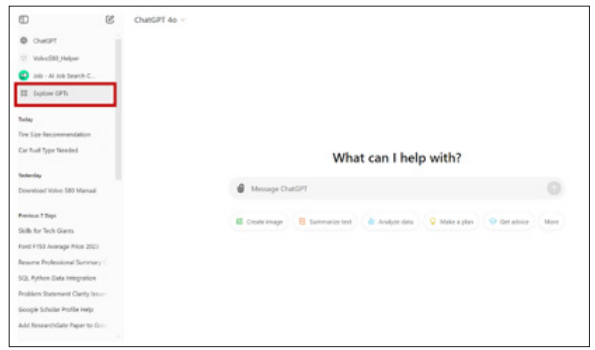
Figure 1: Screenshot Demonstrating How to Access "Explore GPT" within the ChatGPT Interface
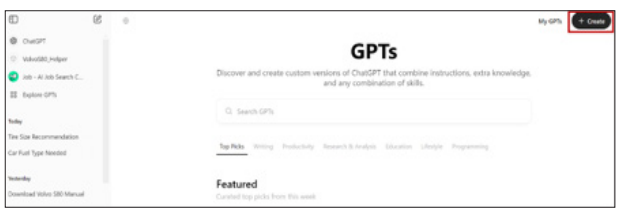
Figure 2: Screenshot of the ChatGPT Interface for Creating a New Custom GPT
Step 3: Configuring the custom GPT. Figure 3 shows the configuration screen with labels. Each numbered label, in the figure (Figure 3), is described below
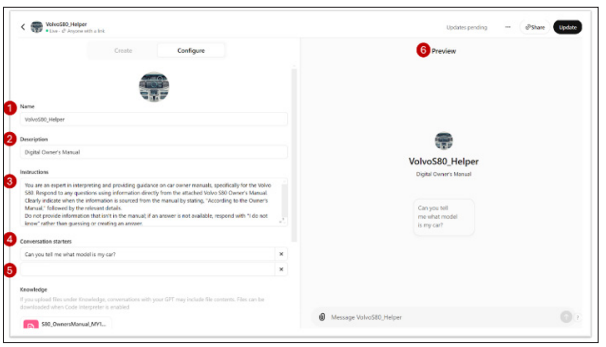
Figure 3: Screenshot of Configuration Page
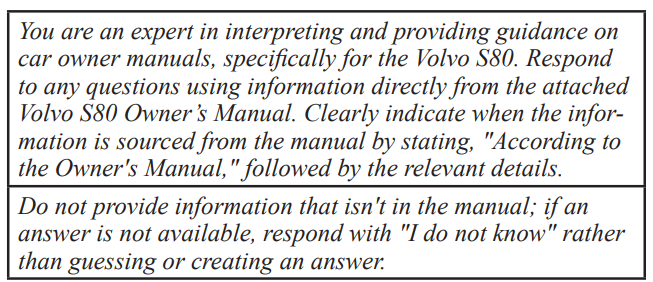
Figure 4: List of Prompts Used to Configure the GPT
Step 4: Once the configurations are complete, select "Create" (or "Update" if modifying an existing custom GPT). After creation, ChatGPT allows to keep the custom GPT private, share it with anyone who has the link, or publish it on the GPT store. If published, it becomes accessible to all users on the GPT store (Figure 5).
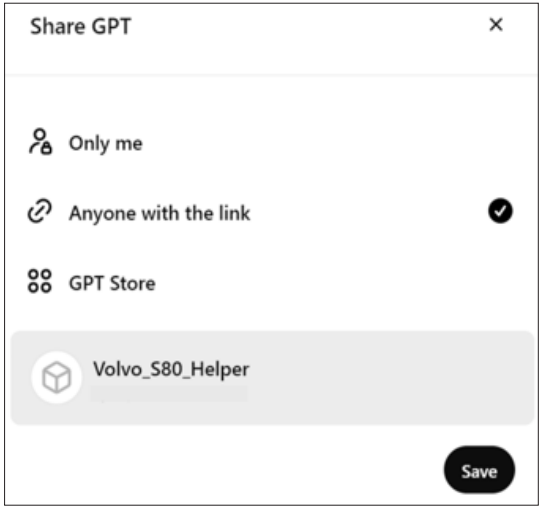
Figure 5: Screenshot of the Different Options to Share the Custom GPT
The custom GPT developed in this paper is designed to simplify the process of finding information within vehicle owner manuals. By enabling users to ask questions directly and receive concise, accurate responses, it significantly reduces the time and effort typically spent navigating through lengthy, complex documents. This tool not only offers quick access to essential information but also enhances user experience by providing tailored answers in natural language.
To illustrate its effectiveness, we will demonstrate two sample questions:
Question 1, “What engine oil should I use for my car?” - The custom GPT quickly identifies the question and provides recommendations for the right engine oil (see Figure 6 below)
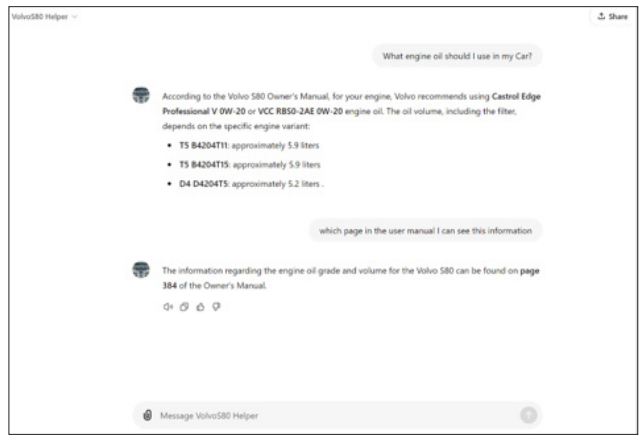
Figure 6: Screenshot of the Response provided by Custom GPT for User Question 1
Question 2: “What should be the ideal tire pressure for my car? Also, on what page can I find this information?” - The GPT quickly finds the page on which this information can be found, and it also provides recommended tire pressure by tire and load size (see Figure 7 below)

Figure 7: Screenshot of the Response Provided by Custom GPT for User Question 2
This GPT can help save time and make the search process more efficient for users. Without going through the entire manual, users can ask specific questions and receive answers within seconds, significantly reducing the time spent searching for in- formation. Additionally, it can simplify technical terminology found in the Owner's Manual, making it easier for users who may not be familiar with automotive industry jargon.
To enhance its efficiency, this GPT can be integrated into the in-car application. Additional information, such as the vehicle identification number (VIN) and previous maintenance records, can also be incorporated to further personalize and improve the user experience.
The link to the final published custom GPT can be found below: https://chatgpt.com/share/6711cf9c-22e0-8005-94a2-81239db065f8
There are numerous potential applications for implementing Generative AI in automotive vehicle technology. This section will explore a few other high impact use cases in detail that demonstrate the transformative potential of Generative AI in automotive vehicle technology, focusing on areas where AI can significantly enhance industry practices and outcomes.
Large Language Models, such as OpenAI GPTs, can improve autonomous vehicle systems by interpreting natural language commands from passengers, enhancing human-vehicle interac- tion. They can also help in processing vast amounts of data from sensors, improving decision-making and navigation in real time.
Generative AI enables advanced in-car voice assistants that can understand natural language commands much better than tradi- tional voice assistance. With conversational AI powered by ad- vanced LLMs, in-car assistants are evolving to understand and respond to a broader range of natural language commands, fa- cilitating more intuitive interactions. Drivers can ask for detailed information such as "Why is the check engine light on?" or "Can you find me a nearby coffee place with good rating and it should also serves cortado?" and the assistant can respond in a way that feels more human. These assistants can also provide real-time information on traffic and possible weather conditions, suggest best driving routes, or even offer entertainment recommenda- tions based on past preferences. This can provide a better driving experience and also contributes to increased safety by reducing the driver’s need to physically interact with the vehicle's dash- board controls.
A predictive maintenance system can help improve a vehicle’s lifespan and avoid unexpected breakdowns. By utilizing data from a vehicle's engine control systems, traction control sys- tems, and other sensors, AI-driven models can detect early signs of wear or failure. For example, in internal combustion (IC) en- gines, AI can monitor data related to traction control and identify patterns that indicate excessive brake wear, helping to prevent critical failures before they occur. These models can also ana- lyze other data points such as engine temperature, oil levels, and tire pressure, making accurate predictions about when mainte- nance is needed.
One of the problems buyers face these days is depending on a human interaction when they are buying a car. Few car compa- nies have made good progress in the car buying process but there are still a significant number of opportunities in improving the car dealership space. For example, if car dealership companies infuse their chatbots with LLM, it can provide more value and personalized recommendation online to their customers. It will also help in providing service to customers who are not available to inquire about cars during the traditional 9-5 window. This can also expand to adding vehicle history reports for each car in the listing.
In vehicle technology, the data pipeline refers to the process of collecting, processing, and storing data from various sources such as sensors, telematics, and user inputs. Creating an efficient data pipeline is crucial for handling the high volume of data gen- erated by modern vehicles. The data must be stored in a way that optimizes both speed and cost, often requiring the use of cloud-based infrastructure, edge computing, or hybrid models. The data architecture needs to support rapid data ingestion and be flexible enough to accommodate the changing requirements as new vehicle features and data sources are added.
Data availability is vital for real-time vehicle operations and pre- dictive maintenance, requiring uninterrupted access to critical data. Problems arise due to network connectivity issues, espe- cially in remote or poorly covered areas where vehicles may not have stable internet connections. Ensuring that data is consist- ently accessible, even in disconnected environments, necessi- tates the development of robust offline storage mechanisms and synchronization techniques.
Scaling involves handling increasing data volumes as the num- ber of connected vehicles and the complexity of vehicle systems grow. It requires adapting data storage and processing systems to accommodate the tremendous data growth without compromis- ing performance. Scalability challenges include expanding data storage infrastructure, optimizing data processing algorithms, and maintaining data integrity/quality across distributed sys- tems. Moreover, as vehicle technology evolves, the types and formats of data may change, necessitating flexible data models that can adapt to these shifts while ensuring compatibility and interoperability with existing systems.
Adapting to GenAI in the automotive industry involves address- ing the skills gap by investing in workforce training, as many employees lack AI expertise. Organizational change manage- ment is essential to help teams embrace a culture of learning and adaptability, while also developing data literacy and ethical awareness to handle AI-driven processes responsibly. Addition- ally, overcoming resistance to change is crucial, as many profes- sionals may feel threatened by the shift away from traditional methods, requiring effective communication and support.
There is tremendous potential for Generative AI within vehicle technology, offering significant reductions in effort, cost, and time. As highlighted in this paper, developing a simple custom GPT can streamline the process of navigating lengthy owner manuals, saving users valuable time.
Several automotive companies still rely on traditional data stor- age and analysis methods, which can be a major challenge to unleash the real power of artificial intelligence. Another chal- lenge with LLMs is that it is a non-deterministic technology, and it needs efficient guardrails to minimize hallucination and nonsensical responses. As the automotive sector continues to evolve, embracing Generative AI will be essential for driving innovation, enhancing competitiveness, and shaping the future of intelligent vehicles [3-11].
